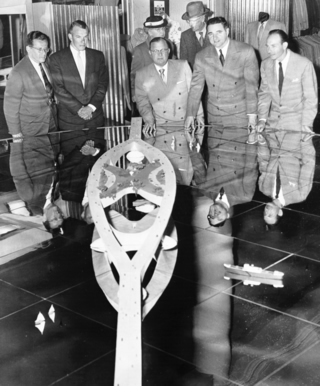Visionaries on the Wing - Page 2
But he wasn't a good businessman, Hammond says, and his career in the United States, where he arrived in 1939 to help design the Czech pavilion for the New York World's Fair, never took off.
Polivka worked in the Kaiser shipyards in Richmond, where fellow engineers and architects couldn't follow his rarefied theories.
"They simply didn't understand what he was talking about," says Don Olsen, a young architect in the yards who became a close friend. "A totally outstanding person who was not understood by engineers," Olsen adds, "and he in turn didn't understand them."
 |
|
|
For a time Polivka founded and ran a stress analysis lab at UC Berkeley, and operated a mostly one-man engineering firm with few clients. But one of them was a star.
"The only person he was able to convince [with his progressive ideas] was, of all things, Frank Lloyd Wright," Olsen says.
A fan since reading about Wright's proposed 'One-Mile High Tower' in 1910, Polivka wrote Wright after reading an article in which the architect called engineers "damn fools." Polivka agreed.
"The average engineer knows only beams, girders, columns, and any deviation from these everyday tools is considered as unusual, crazy, or dangerous," Polivka wrote. "For many years I was grappling with this prejudice."
Polivka was soon engineering some of Wright's trickier jobs, including the spiral-ramped Guggenheim Museum in New York.
Although Wright was Polivka's top client, "Wright was always late in paying him," Hammond says. "He would send Wright bill after bill."
Wright and Polivka shared the belief that "structural honesty provides the most compelling beauty," wrote Shahin Vassigh, a University of Buffalo architecture professor, in an exhibition catalogue entitled Engineering the Organic, about Polivka's work for Wright. And both men despised American bridges.
"Modern construction has now made the rampant exposed construction of the upturned steel truss bridges extravagant and obsolete," Wright wrote in his 1949 bridge proposal to state and regional officials, adding, "They remain a devastating blemish on our landscape."
 |
|
|
Bay Area officials, meanwhile, were squabbling about where and how to build a second crossing, or a "southern crossing" to relieve what had become, by the early 1940s, "intolerable congestion."
The new proposals ranged from the mundane—Oakland planners wanted to simply place what the San Francisco Examiner called a "carbon copy parallel bridge" alongside the existing Bay Bridge—to the grandiose.
Why stop with simply bridging one Bay, some argued, when you could bridge several bays and create a couple of freshwater lakes and industrial and residential building sites along the way?
The Reber plan called for building dams topped by roadways from Alameda to San Francisco and from Richmond to Marin County, turning South San Francisco Bay and San Pablo Bay into freshwater lakes.
Other plans called for bridges running from near Fishermen's Wharf to Alcatraz and Marin, sometimes continuing on to Berkeley.
The Battle of the Bridges had more to do with where to build bay crossings—and whether they should be bridges, causeways, dams, or tunnels, or a combination—not what they should look like.
It is notable that the Wright-Polivka design was done by its designers pro bono. There were no stipends and there was no official design competition.
For Polivka it was a labor of love, his granddaughter says. It would also put his name in the spotlight and might have revived his strangely stalled career.
Polivka began the effort. "This was the first time I approached Frank Lloyd Wright to collaborate with me," Polivka wrote in a memoir.




